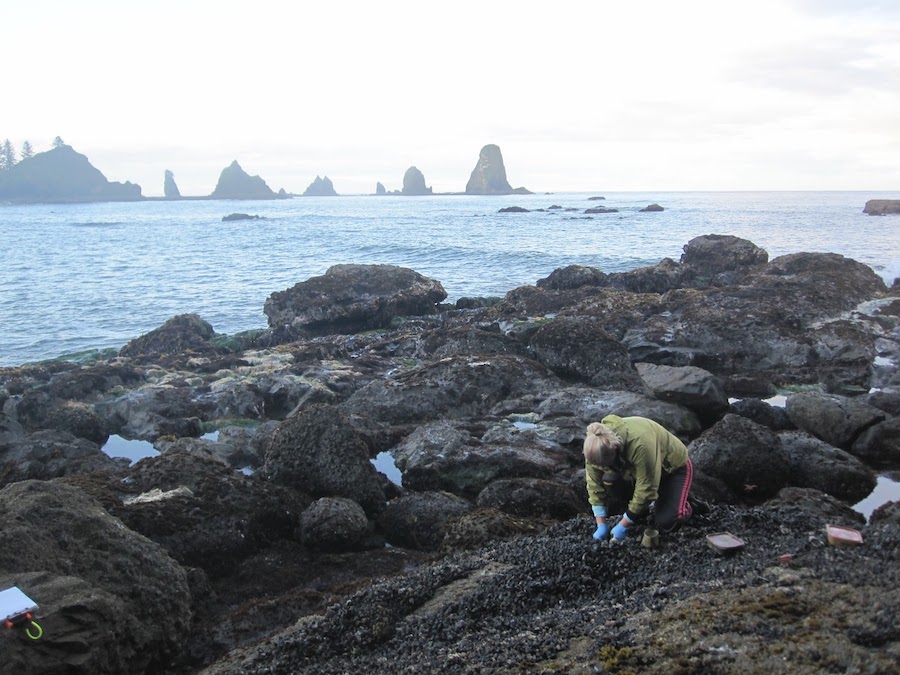
Creating their own air conditioning may help local species resist climate change
Even on hot summer days, forest temperatures are much cooler. According to Laura Jurgens, plants and animals can change the temperature of their environments.
Jurgen’s focus is dissertation research of the temperatures of mussel and seaweed beds over the course of a year. From the UC Davis Marine Reserve at Bodega Bay, Jurgens traveled to the Channel Islands and Olympic National Parks. Despite the geography ranging from Southern California to Washington state, the temperature of the habitats stayed relatively the same and cooler than the outside environment.
“We often think in ecological conversation that the physical environment affects organisms,” Jurgens said. “The reverse can also be true, so many different creatures live in habitats formed by other creatures.”
Mussel and seaweed beds just a centimeter thick can act as thermal buffers and reduce temperatures. This, in turn, helps species that would get stressed and possibly die at higher temperatures.
“We expected temperatures within mussel beds to be buffered relative to those outside, but we were not prepared for the extent to which this was the case,” said Brian Gaylord, Jurgen’s advisor and co-author. “We typically expect to see warmer environmental temperatures at lower latitudes and cooler ones nearer the poles, but this trend was essentially eliminated in the mussel beds.”
Habitats where species play an active role in maintaining the local temperature may be able to resist rising temperatures due to climate change, but only up to a certain point. Once a certain threshold is passed, and the species responsible for acting as the local air conditioner are gone, even more species will disappear.
“Places with more severe heat waves will lose habitats faster,” Jurgens said.
In the warmest areas of the study, San Diego and Baja California, Jurgens noticed the mussel and seaweed beds were not as common. It’s not clear if this is simply the edge of their range, or if the lack of organisms is due to rising temperatures.
The Channel Islands National Park, one of the areas Jurgens used for her research, does not specifically study climate change, but has seen rising temperatures throughout the park, excluding the mussel and seaweed beds.
“There has been a decline since 2014 in sea stars due to wasting disease,” said Yvonne Menard, the chief of interpretation and a public information officer.
Climate change does not cause this deadly disease, but it makes it worse.
Jurgen’s study points to assumptions that are made about how climate change may affect species. Predictions about the world getting warmer do not take into account how some areas regulate their own temperature.
“For habitats that are degraded, we don’t know how that will affect the species [that live there],” Jurgens said.
For more intact areas, there may be some hope that species living there can resist the warming climate since they have their own natural air conditioning.
“We’re already outstripping the worst case scenario [for climate change] faster than thought,” Jurgens said.
Written By: Rachel Paul — science@theaggie.org




